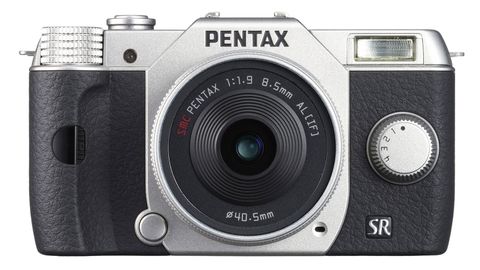Why you can trust TechRadar
Metering and autofocus performance on the Pentax Q10 are both much improved compared to the previous model, but even so, contrasty scenes may still require compensation to achieve well exposed images when using segment metering.
Spot and Centre-Weighted metering options are also included. The exposure compensation range may be quite limiting for some, only enabling you to make adjustments of two stops above or below the metered value.

Auto white balance performs well in a wide variety of lighting conditions, leaving just enough of a colour cast to retain the atmosphere of the scene. Rather strangely, when shooting under some fluorescent lighting a strong green cast can be seen, but this is an isolated phenomenon that should rarely affect images.
Using such a small sensor poses several design challenges, which Pentax has attempted to overcome by using Backlit CMOS sensor technology.

Images taken at the base sensitivity of ISO 100 are crisp and full of detail, although a little luminance noise can be seen on close inspection. At higher sensitivities, the Pentax Q10 performs well in the lab, but quite severe softening of fine details can be seen in real world images, leading to a smudgy or even blotchy-looking appearance.
Images taken at sensitivities up to ISO 400 show no significant signs of noise and fine details are reasonably well defined. Increase this to ISO 800 and a combination of luminance noise and softening of fine details begin to appear on close inspection.

By ISO 1600, images are noticeably softened due to the heavy-handed nature of the noise reduction system, although images taken at this and higher ISO settings should still be fine for sharing at low resolutions on the web.
At the highest sensitivity, very little fine detail remains, although the control over chroma noise throughout the sensitivity range is quite impressive. This performance is in line with compact cameras using similar sized backlit CMOS sensor technology, but falls way short of the high ISO capabilities of cameras equipped with larger sensors.

Dynamic range also seems quite limited in real world images, with small areas where highlights have blown being held back by the Pentax Q10's processing engine even though they may contain no detail. This can lead to a slightly unnatural appearance in some images with extreme contrast.
The Auto HDR feature isn't really the answer either, since images have a very unnatural appearance, with bright halos around high-contrast edges.

Autofocus is reasonably quick with the standard 5-15mm zoom lens, performing especially well at the wide angle setting. Although focusing speeds are noticeably quicker than the previous model, there is still quite a delay between attempting focus and achieving it.
This is especially apparent when shooting moving subjects. An AF assist lamp helps with focusing in low light, resulting in reasonable low-light focusing performance, although the brightness of the lamp can occasionally be distracting, leading to squinted eyes in portraits.

Current page: Performance
Prev Page Build quality and handling Next Page Image quality and resolution
